Microsoft Wireless Natural Multimedia keyboard (2004)
Microsoft Wireless Natural Multimedia keyboard, came out in 2004.
In 2005, i bought Microsoft Wireless Natural Multimedia keyboard. This is basically a one-piece split keyboard with special buttons on top. (as of 2009-07, the keyboard is renamed to “Microsoft Wireless Optical Desktop Pro Keyboard”)
I'm a input device nerd. I find this keyboard in general better than all i've used in my 14 years of computing experience.
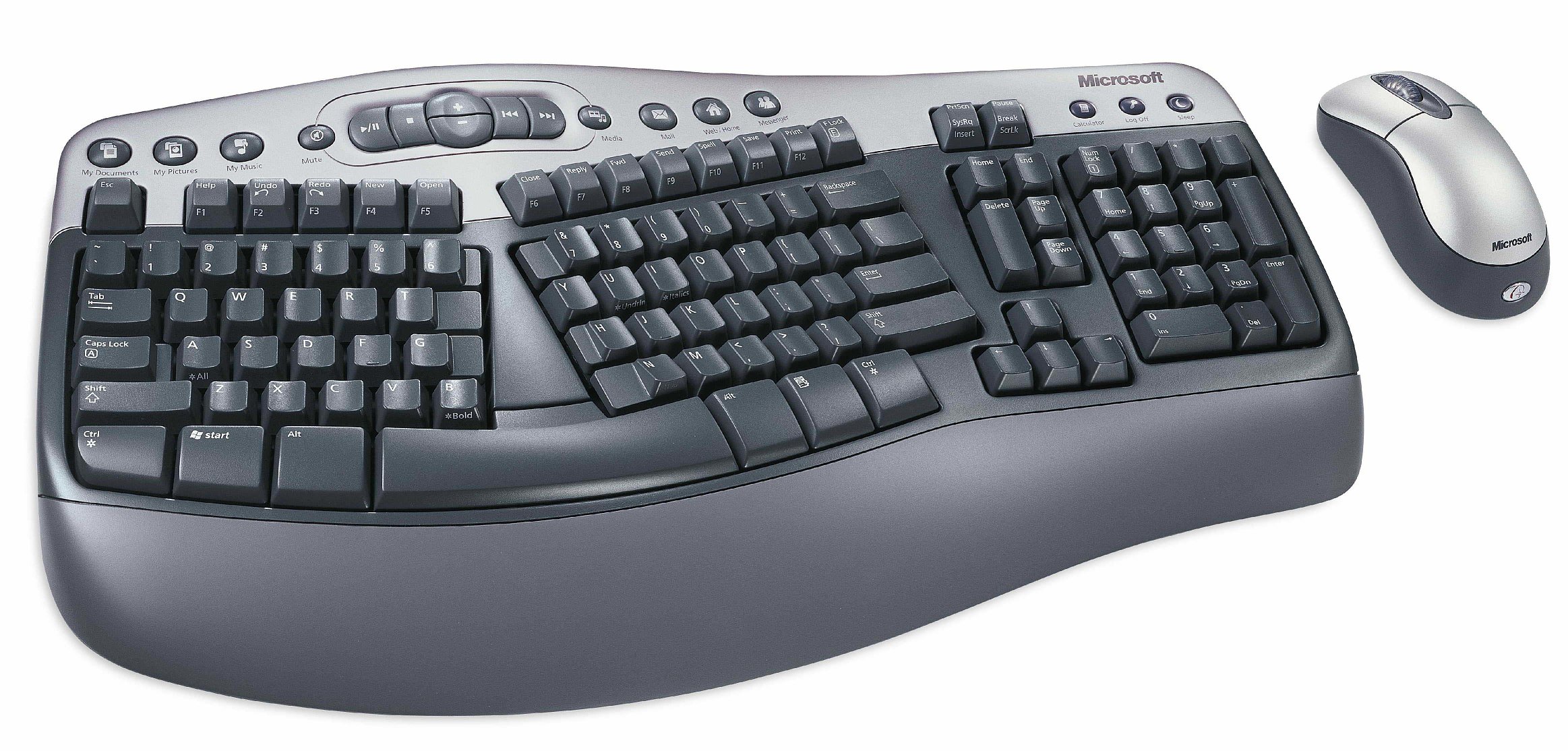
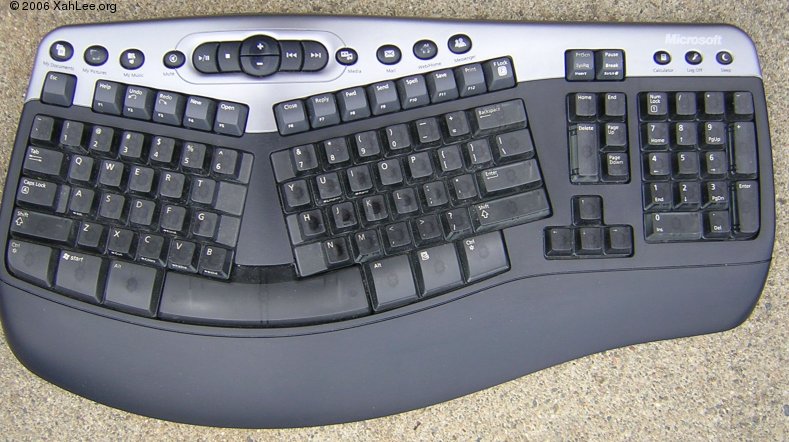
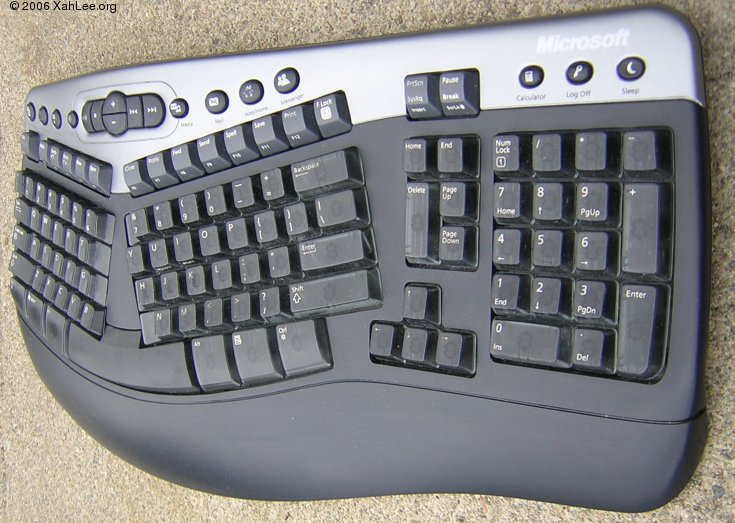
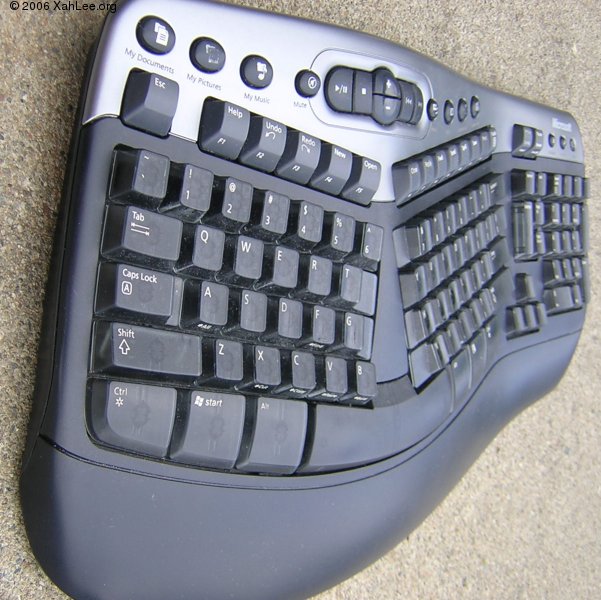
Outstanding Features
• Quality split design. If you type more than few hours a day, then try to get used to a split keyboard. It prevents your wrists from bending. Once you get used to split keyboard, typing on a flat keyboard will immediate feel discomfort.
• Large Alt and Ctrl keys. Large modifier keys are especially nice if you are a programer, in particular, if you are a Emacs user.
• The modifier keys are positioned symmetrically with respect to your thumbs. Many keyboards, especially Apple's Keyboards, the right-side modifier keys are placed far more to the right, so you have to curl the thumb way inward to press them, making the key essentially decorative in nature.
• Very nice tacticle feel of the keys. This is important for professional typers such as writers, game chatters, programers. Notebook style shallow keys will quickly give you wrist problems after prolonged use.
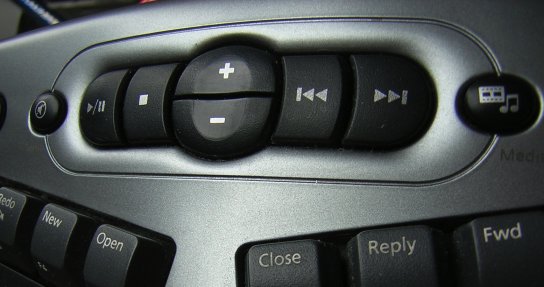
• The multi-media keys are fantastically convenient. You can switch to next song, pause playing, adjust volume, without needing to switch to music player first.
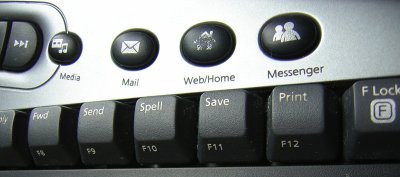
The special application keys, are extremely convenient. There are a total of 9 of them, not counting the mute and sleep buttons. These keys can be set to launch any application thru the bundled IntelliType software.
IntelliType Keyboard Macro Software
MS keyboards come with IntelliType Software (both Windows and Mac versions bundled.). It lets you customize the keys fairly extensively. For example, the function keys can be assigned to launch applications or do other commands. For the Mac, the meaning of ❖ Window/⌘ command key and Alt key can be swapped, and CapsLock key and Ctrl key can be swapped too. Any of these modifiers can also be disabled.
I judge IntelliType to be a truely a excellent key macro software among competitors. But for a detailed bone-picking analysis, see: Problems of Microsoft IntelliType .
Wireless
Many wireless keyboard are known to have connection problems. I never had any problem with this one. It takes 2 AA batteries, and lasts about 6 months, for active use that's more than 10 hours per day on average.
Neutral
Home Cluster Keys Arrangement
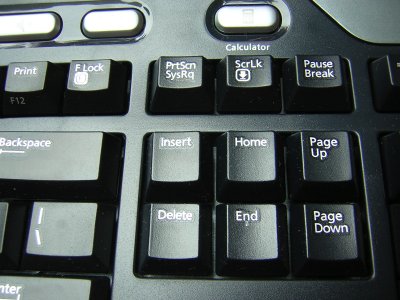
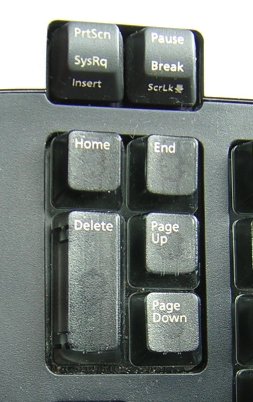
Which arrangement is better is really a personal preference. I've used both for years. I don't think it matters much, just make sure all your keyboards have the same arrangement so you don't get disoriented. For more detailed analysis, see: Keyboard Home/End Keys Arrangement .
Quietness
This keyboard is not one of those super quite ones. It makes a lot squeak and thud noises. What i hate are some keyboard where there's a outstanding thud every time you press the space bar.
Flaws
Over all, i think this keyboard is far superior than any in my 14 years of computing experience. However, here are a few design flaws i see:
Hidden Cap Lock LED Indicator
The led indicators for CapsLock, 🅵Lock, NumLock are not on the keyboard. They are on the receiver dongle. (the little mouse-sized block connected to USB) So, if you tuck the receiver under your desk, then these leds are not in sight, making them useless. (2009-02-04 addendum: later models, the LEDS are now on the keyboard.)
Problem with F Lock Key
This 🅵Lock key is a pain because the behavior of a function key depends on the state of the F Lock, so that a user often pressed a function key only to find it do something unexpected. For detail, see: Problems of F-Lock Key and How to Disable It .
F Keys Not Touch-Type Friendly
The function keys are arranged together in two groups of rows on top. The left row is F1 to F5, the rigth row is F6 to F12 and 🅵Lock. This is different from the standard arrangement of 4 keys per cluster. The continuous arrangement makes touch-typing of these F keys impractical, because touch typing are much enhanced by the gaps in the 4-key-per-block arrangement. The continuous row makes the keys in the middle of the row impossible to easily touch type. So, effectively, F8, F9, F10 are made unusable to me. (coupled with the 🅵Lock key problem, F11 and F12 are both also made unusable for those who use f-keys with touch typing.)
(I use F-keys extensively. For launching/switching apps (email, web, emacs, terminal, IM, etc), close window, hide app)
Mingled PrtScn/Break etc Keys

The functionalities of PrintScreen, Insert, Break, ScrollLock keys are mingled together into two physical keys. Their function depends on the 🅵Lock, and the way they are labeled is reversed from the way function keys are with respect to the F Lock status. This is done in a very confused way with confusing labels on the keys. The left key has these 3 lables: {PrintScreen, SysRq, Insert}, and the right key has {Pause, Break, ScrollLock}. The third label are printed in front of the keys.
Normally, it wouldn't be a problem of jamming 4 functionalities into 2 physical keys thru a state-toggling key. However, in this case, it's very confusing because the PrintScreen, Break, ScrollLock are conventionally a set of 3 keys often considered as one unit. To put these 3 keys plus the Insert key, into 2 physical keys, is confusing. What made it worse is that the PrintScreen, Break, ScrollLock keys are somewhat historical and they do not have a definite purpose today (except the PrintScreen key). Also, there's another esoteric key SysRq that is sometimes confused or jamped into the same key as PrintScreen. Somewhat similarly, the Break key is sometimes labeled Pause. These reasons made it very confusive.
All this shouldn't matter to most users, since these keys are almost never used. But if you are a heavy keyboard macro user, and want to assign functions to every available key so you have 1-button operation for many tasks, then the jamming of PrintScreen/SysRq, Insert, Break, ScrollLock/Pause into 2 keys with a state key is bad. Because it's painful to figure out which is what.
Addendum. This keyboard is discontinued. Its replacement is Microsoft Natural Ergonomic Keyboard 4000 .
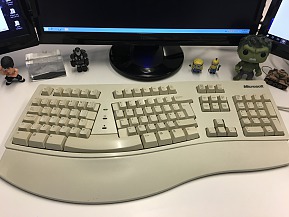 Microsoft Natural Keyboard
Microsoft Natural Keyboard